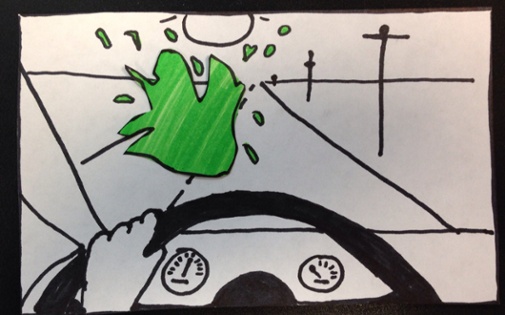Quantum Information Goes Splat on Causality's Windshield
David Norris
Physicists sleep well at night comforted in the fact that information can’t travel faster than light, but determining where exactly the causality police write the speeding ticket in various systems can be tricky to pin down. In an invited talk at QIM 2014, my colleague Paul Lett from NIST and the Joint Quantum Institute will present new measurements showing just how this speed limit is enforced for information contained in bipartite quantum entangled states, despite superluminal arrival of correlations shared between the two parts.
"Fast-light" experiments typically operate in a region of gain, where the negative group velocity for a transmitted light pulse results in a signal peak exiting the medium faster than it otherwise would in vacuum. But causality holds even in these circumstances, and the information carried by the pulse—for instance, in its leading edge—never truly arrives faster than c. However, creating such a sharp edge experimentally requires use of a large signal bandwidth, putting some spectral components outside the fast-light region and possibly complicating the interpretation of such a measurement.
The researchers in Paul’s lab get around the bandwidth problem by using entangled twin beams generated in four-wave mixing, passing one through a fast-light medium while the other serves as a timing reference via their shared correlations (detected in homodyne measurement.) Their experiments have previously shown that fluctuations in the fast beam can clearly be advanced in time, for both the leading edge and the peak of the correlated region. But what about the mutual information, the knowledge one gains of the slow beam by measuring its entangled fast partner?
The new data that Paul plans to present show that the velocity of information transfer is very much restricted, with the information peak advancing while the leading edge of information is always compressed against the front of the original (unadvanced) envelope. It’s like a beetle flying purposefully down the highway, only to run up suddenly (splat!) against the invisible windshield of causality that rigidly opposes any further advance. (Interestingly, the reverse seems not to be true: In a slow-light medium, the information beetle can evidently pass through the back windshield unscathed. More on this at the talk!)
It might seem odd that fluctuations in one beam can be advanced without bringing along any associated information. The problem is that noise added in the four-wave mixing gain process degrades the information content just enough to enforce the rule. Is there any way around this impasse? In fact, Paul’s team is currently repeating the measurements in a system with phase-sensitive gain, where the signal beam is amplified in a certain quadrature without adding noise. But here it seems the dispersive slope becomes small and uncooperative, again limiting the advance of information.
We’ll hear more about these new measurements when Paul gives his talk on Tuesday, March 18, at QIM 2014. (Unfortunately, both causality and scheduling prevent it from arriving any sooner…)

